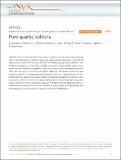Files in this item
Pure-quartic solitons
Item metadata
| dc.contributor.author | Blanco-Redondo, Andrea | |
| dc.contributor.author | de Sterke , C. Martijn | |
| dc.contributor.author | Sipe, J. E. | |
| dc.contributor.author | Krauss, Thomas F. | |
| dc.contributor.author | Eggleton, Benjamin J. | |
| dc.contributor.author | Husko, Chad | |
| dc.date.accessioned | 2016-06-22T14:30:26Z | |
| dc.date.available | 2016-06-22T14:30:26Z | |
| dc.date.issued | 2016-01-29 | |
| dc.identifier | 243431735 | |
| dc.identifier | c9ef24b1-548e-4257-9bbd-874b0d905e99 | |
| dc.identifier | 000369022600010 | |
| dc.identifier | 84959294905 | |
| dc.identifier.citation | Blanco-Redondo , A , de Sterke , C M , Sipe , J E , Krauss , T F , Eggleton , B J & Husko , C 2016 , ' Pure-quartic solitons ' , Nature Communications , vol. 7 , 10427 . https://doi.org/10.1038/ncomms10427 | en |
| dc.identifier.issn | 2041-1723 | |
| dc.identifier.uri | https://hdl.handle.net/10023/9036 | |
| dc.description | This work was supported in part by the Center of Excellence CUDOS (CE110001018), Laureate Fellowship (FL120100029) schemes of the Australian Research Council (ARC) and by The University of Sydney and the Technion collaborative photonics research project funded by The Department of Trade and Investment, Regional Infrastructure and Services of the New South Wales Government and The Technion Society of Australia NSW. T.F.K. was supported by EPSRC UK Silicon Photonics (Grant reference EP/F001428/1). C.H. was supported by the ARC Discovery Early Career Researcher award (DECRA—DE120102069). | en |
| dc.description.abstract | Temporal optical solitons have been the subject of intense research due to their intriguing physics and applications in ultrafast optics and supercontinuum generation. Conventional bright optical solitons result from the interaction of anomalous group-velocity dispersion and self-phase modulation. Here we experimentally demonstrate a class of bright soliton arising purely from the interaction of negative fourth-order dispersion and self-phase modulation, which can occur even for normal group-velocity dispersion. We provide experimental and numerical evidence of shape-preserving propagation and flat temporal phase for the fundamental pure-quartic soliton and periodically modulated propagation for the higher-order pure-quartic solitons. We derive the approximate shape of the fundamental pure-quartic soliton and discover that is surprisingly Gaussian, exhibiting excellent agreement with our experimental observations. Our discovery, enabled by precise dispersion engineering, could find applications in communications, frequency combs and ultrafast lasers. | |
| dc.format.extent | 8 | |
| dc.format.extent | 1278055 | |
| dc.language.iso | eng | |
| dc.relation.ispartof | Nature Communications | en |
| dc.subject | QC Physics | en |
| dc.subject | NDAS | en |
| dc.subject.lcc | QC | en |
| dc.title | Pure-quartic solitons | en |
| dc.type | Journal article | en |
| dc.contributor.sponsor | EPSRC | en |
| dc.contributor.institution | University of St Andrews. School of Physics and Astronomy | en |
| dc.identifier.doi | https://doi.org/10.1038/ncomms10427 | |
| dc.description.status | Peer reviewed | en |
| dc.identifier.grantnumber | EP/F001622/1 | en |
This item appears in the following Collection(s)
Items in the St Andrews Research Repository are protected by copyright, with all rights reserved, unless otherwise indicated.

